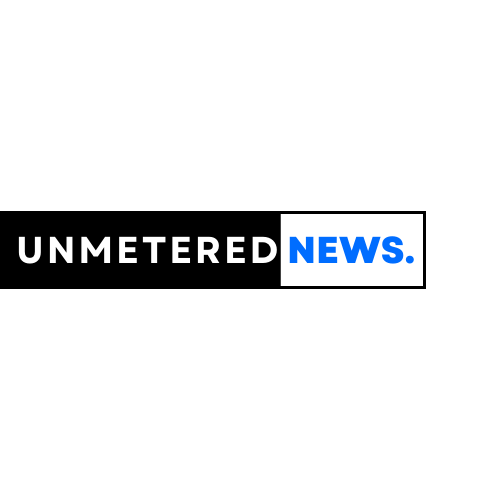- Home
- Advertise With us
- World News
- Tech
- Entertainment
- Travels & Tours
- Contact US
- About us
- Privacy Policy
Top Insights
The Golden Dome is Missing a Key Focus

EXPERT PERSPECTIVE / OPINION – On January 27, 2025, President Trump signed an Executive Order aimed at defending the U.S. against an attack by ballistic, hypersonic and cruise missiles as well as other advanced aerial attacks; the Golden Dome initiative. The Pentagon moved out smartly to fulfill this order. Industry lined up with ideas on how to defend the U.S. and Department of Defense bureaucrats convened and developed a strategy. All the work that has happened is needed. But we need more.
We need to build the technology to support defensive systems to secure the homeland from adversary advanced aerial attacks. But we are missing a crucial part of the equation which could be happening now with only limited additional resources.
The U.S. needs to be moving out diligently to put in place the best collection capability to provide early warning regarding U.S. adversaries. Too often, the U.S. jumps to a solution and forgets that we must start with intelligence to put the building blocks in place to address the solution.
In this case, the Executive Order asks for a study of adversary threat but that is all. There is nothing about developing intelligence for early warning on adversary intent. This is an important oversight. The U.S. must focus on developing warning that lets decisionmakers know when our adversaries are planning a launch. The important satellite tracking mechanisms that will follow the launches should only be used if the intelligence community misses the early warning.
To ensure the U.S. is using its resources to its best ability in building the Golden Dome, the entire intelligence infrastructure of collection, technology to support the collection, and ability to exploit the collection – to include analytical experts – must be synergized to provide early warning that an adversary is considering an aerial attack.
The Cipher Brief brings expert-level context to national and global security stories. It’s never been more important to understand what’s happening in the world. Upgrade your access to exclusive content by becoming a subscriber.
The literature regarding golden dome focuses on interception and tracking missiles once they are launched. There is a lot of discussion about the need for a defensive system. All of this is warranted, and it is the area where the most money needs to be spent. However, the literature is much less focused on what the U.S. needs to put in place prior to launch to buy time for developing options to counter an attack and limit the risk regarding that decision making process.
Without the platforms that can collect on adversary intent, capability, movement, and other anomalies, decisionmakers could be left with rushed choices on the use of defensive systems that could result in catastrophic consequences if the technology detects missiles too late or misreads that aerial attacks are coming our way when they may not be.
Time is the important variable for decision makers. The earlier the intelligence community can present them with analysis and reporting of adversary intent, the better and likely less risky the consequences are for the US.
For example, if the Intelligence Community (IC) can provide the President with information that an adversary has given an order to prepare an aerial attack against the U.S. – while the attack is being planned but prior to launch – then there are more options to stop that attack.
The IC is then alerted to track adversary movements so that decisionmakers know how much time they have to decide on an option and which option will work best under the circumstances. In this scenario, U.S. decision makers have days instead of hours, to plan. This allows for a wide range of options to stop a launch – from diplomacy, to sanctions, to military action.
Are you Subscribed to The Cipher Brief’s Digital Channel on YouTube? There is no better place to get clear perspectives from deeply experienced national security experts.
The current Golden Dome literature talks a lot about tracking these aerial devices and calls for a new look at radars, both space and ground based. As I stated, a reliance on this architecture risks being too late in the decision cycle. Kudos to the Army for recognizing the need for smart warning by integrating artificial intelligence into their Integrated Battle Command system, but even this initiative does not hit the early warning collection issue head on.
LTG Gainey, commanding general of the United States Army Space and Missile Defense Command (USASMDC) hinted at the issue during a House Armed Services subcommittee hearing in April when he said the Golden Dome also includes left-of-launch operations, providing deny, delay, disrupt and degrade missile defeat effects in coordination with global combatant commands, the Intelligence Community, Joint Staff, interagency, and Office of the Secretary of Defense. This still does not highlight the need for early warning.
The U.S. can detect missile launches with its existing Space-Based Infrared System satellites in geosynchronous orbit. These satellites can tell where a ballistic missile is going and where its warheads are likely to fall, but the United States wants to develop better warning and tracking by creating a Custody Layer — satellites that will watch where all the other guy’s stuff is — and a Tracking Layer that could also determine where more sophisticated weapons, like hypersonic missiles, are headed.
Fred Kennedy, the inaugural director of the U.S. Space Development Agency and a former director of DARPA’s Tactical Technology Office, shares in Aerospace America, his vision of a Custody Layer, a constellation that would be equipped with moving target indicator radar, imaging radar and other sensors, to keep tabs on an adversary’s offensive “internet of things.” …..These satellites would be the equivalent of Joint Surveillance Target Attack Radar System and U-2 aircraft, but in space. To strike a missile, you have to know where it could be launched from, after all. Complementing the Custody Layer was the Tracking Layer, the satellites that would detect and track hypersonic or ballistic weapons after launch.
This is all important work and needed but note, it is all focused on launch.
If decisionmakers are being told by the space-based interceptors that attacks are on the way—there is only one option, to intercept. But what if those interceptors misread the information or what if they did not read the tracking in time? In either scenario it could be the beginning of a catastrophic event that is based on a mistake.
For that reason, we need to start with the intelligence and put as much effort into that as we are on the interceptors. Collaboration with the Pentagon and other agencies that track satellite imagery is key. I would also add that the Defense Intelligence Agency needs to play a primary role in this initiative which must include increased human intelligence and all forms of open source to include commercial data.
With the intelligence community and department of defense getting smaller, we need to work together more than ever. Defending our nation is a team sport that requires strong intelligence to set up decision makers and operators to make the best decisions possible, helping to mitigate risk. This cannot happen without the defense and intelligence communities working together to provide the first warning—way before launch. Now is the time to push the intelligence community to upgrade technologies that track missiles by providing warning of aberrations in patterns before launch.
By using Artificial Intelligence (AI) to synthesize critical technical collection with anomalies in open source (OSINT), commercial (CAI), and personal (PAI) data, we could have the cultural breakthrough we need to change how the intelligence community uses technical collection fused with OSINT, CAI, PAI and AI. Against this national security backdrop, we could have our first big win in changing how we process intelligence and safeguard the US. NGA’s Maven program is a big step in the right direction of fusing intelligence to support DoD and the rest of the national security establishment. This practice needs to be more widespread.
Now is the time to use proven technology with expert analysis to provide decision makers increased time and space to counter aerial attacks on the homeland. The resources involved, compared to the amount needed for satellites and lasers to shoot down the missiles, is minimal. This action can be started now, the technology exists. Putting in place early warning buys time for the US to develop the rest of the Golden Dome security.
Who’s Reading this? More than 500K of the most influential national security experts in the world. Need full access to what the Experts are reading?
Read more expert-driven national security insights, perspective and analysis in The Cipher Brief because National Security is Everyone’s Business.
Related Articles
North Korea opens massive beach resort, eyes Russian tourists
North Korea unveiled a sprawling east coast resort, state media said Wednesday,...
Costa Rica’s top court seeks to strip president of immunity in corruption case
Costa Rica’s top court on Tuesday asked Congress to strip President Rodrigo...
Dr. Rashmi Singh of SWJ El Centro Appointed as Editor-in-Chief of Perspectives on Terrorism
Small Wars Journal is pleased to announce that our very own El...










Leave a comment